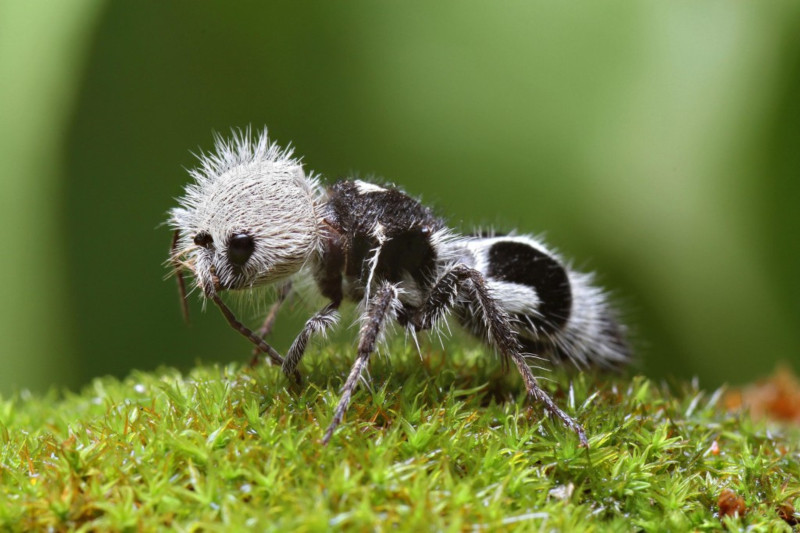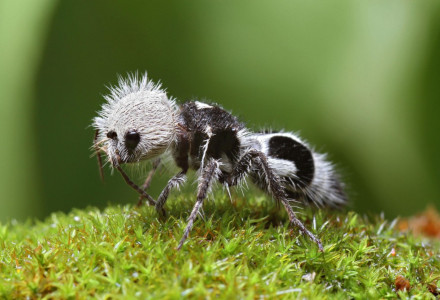
Photographer: Chris Lukhaup
CC License: https://bit.ly/3jsuQ2Y
The Panda Ant forms a rather surprising species of insect and actually is not even an ant. This actually represents a variety of wingless wasp.
The Panda Ant is a most unusual species of insect and is not even an ant.Click To TweetTheir name derives from the obvious resemblance to a panda in its markings and they were first discovered in 1938. We still know very little about this species.
They appear to only to exist in coastal regions of Chile, in South America.
Interestingly, their sting also remains exceptionally powerful for their size. They have even brought down animals as large as cows with only a few dozen stings. Another insect with an incredibly powerful sting is the Fire Ant.
Photographer: Pato Novoa
CC License: https://bit.ly/3yqrm7j
Panda Ant Physical Characteristics and Behavior
This ant displays extreme sexual dimorphism. The difference in both appearance and behavior remains so pronounced that the two sexes are often mistaken for entirely separate species. Indeed, the male often grows several times larger than the female and may attain a length of roughly 0.3 in (less than a cm).
Other animals with sexual dimorphism characteristics are Budwing Mantis, Spiny Bush Viper, Black Lemur, Question Mark Butterfly.
Additionally, the panda ant males have wings while the females are wingless. The males are nocturnal while the females are typically active during the day.
The Panda Ant feeds primarily on nectar from a variety of plants.
After mating, the female cunningly seeks the nest of a ground-dwelling insect, such as a bee or wasp – much similar to the Cuckoo Wasp. There she deposits her eggs. When they hatch, they will feed upon the larva present. How parasitic.
Check out our articles on Bullet Ant, Rasberry Crazy Ant, Argentine Ant, Carpenter Bee, Bulldog Ant

